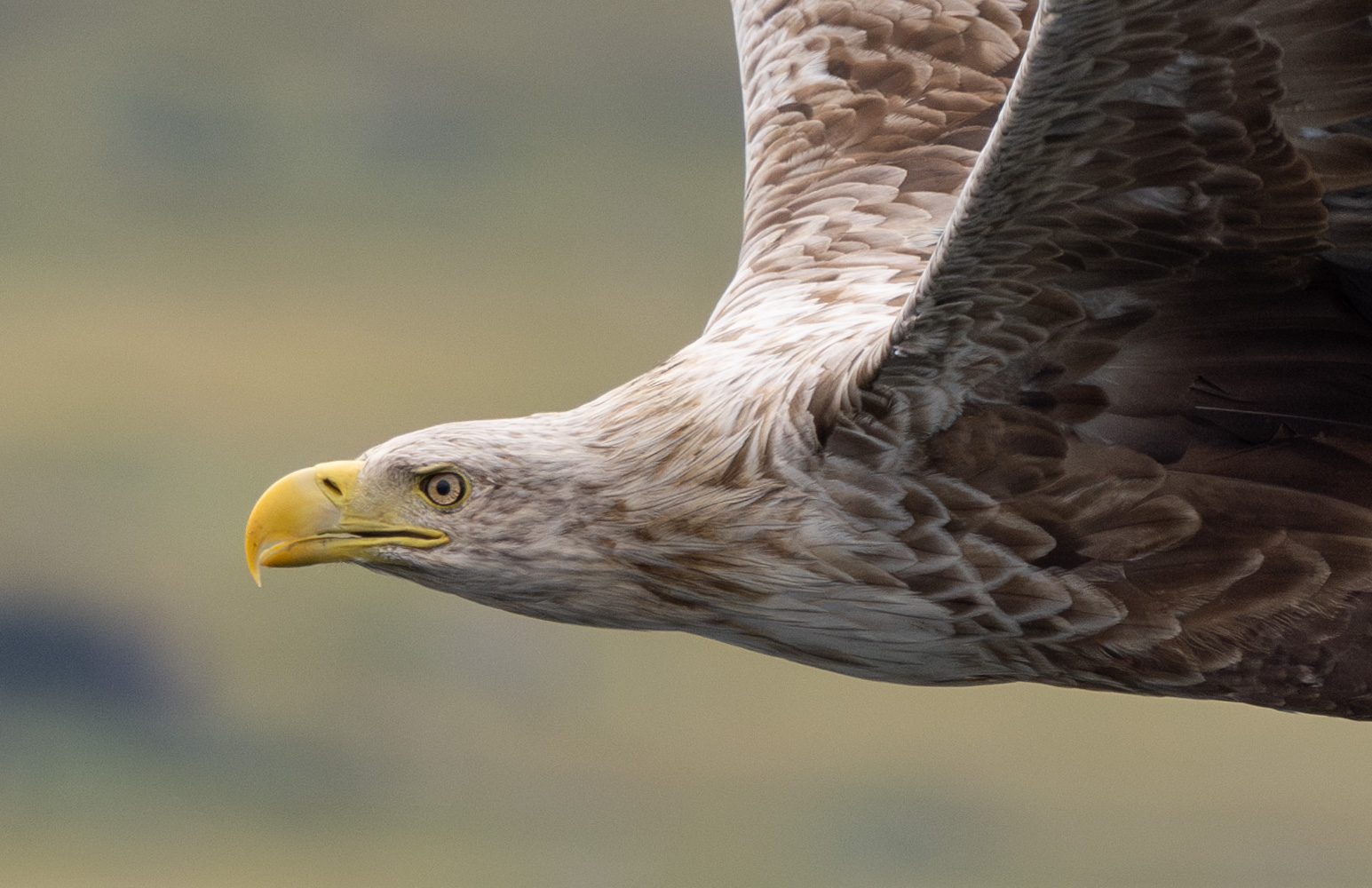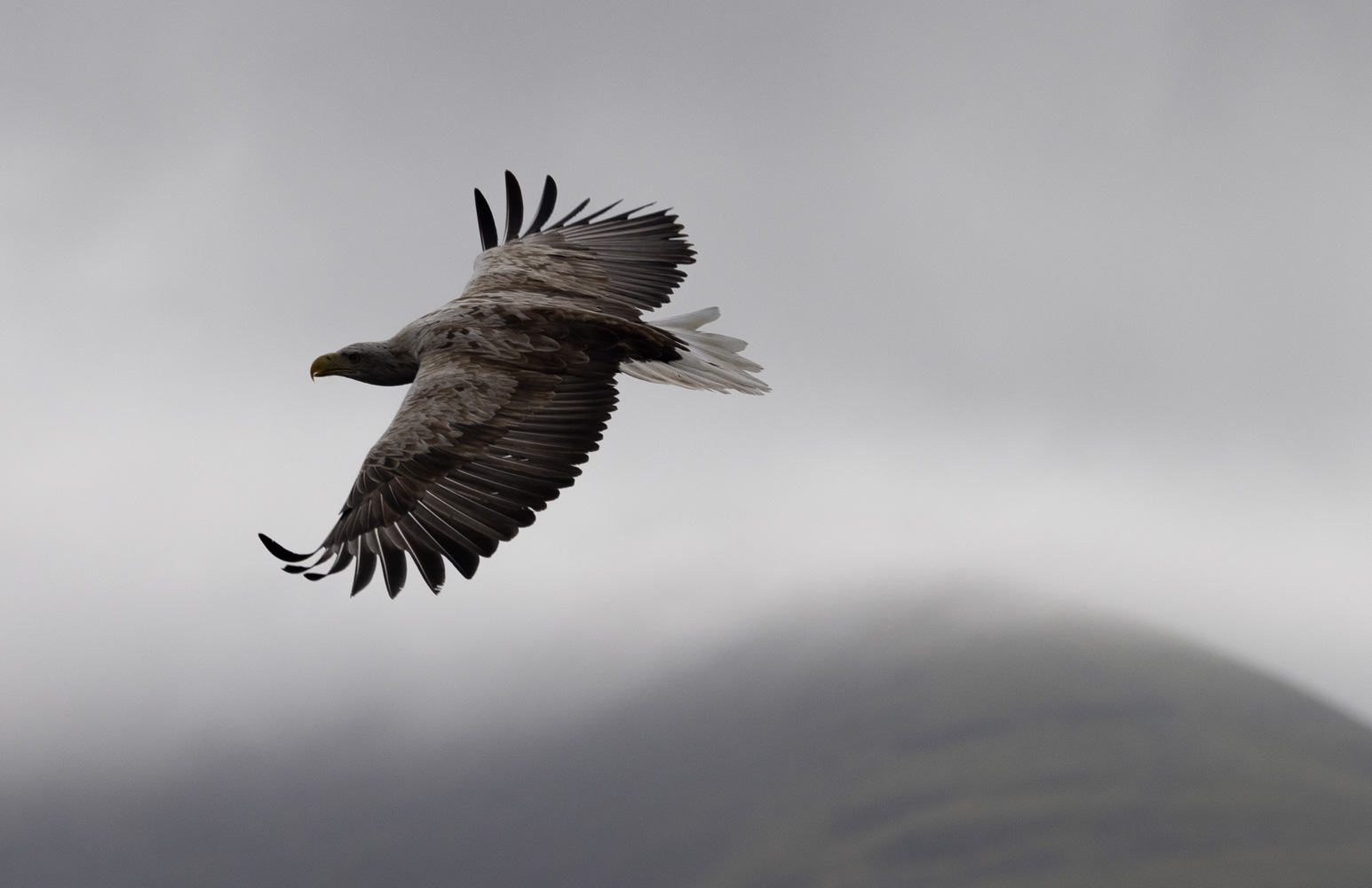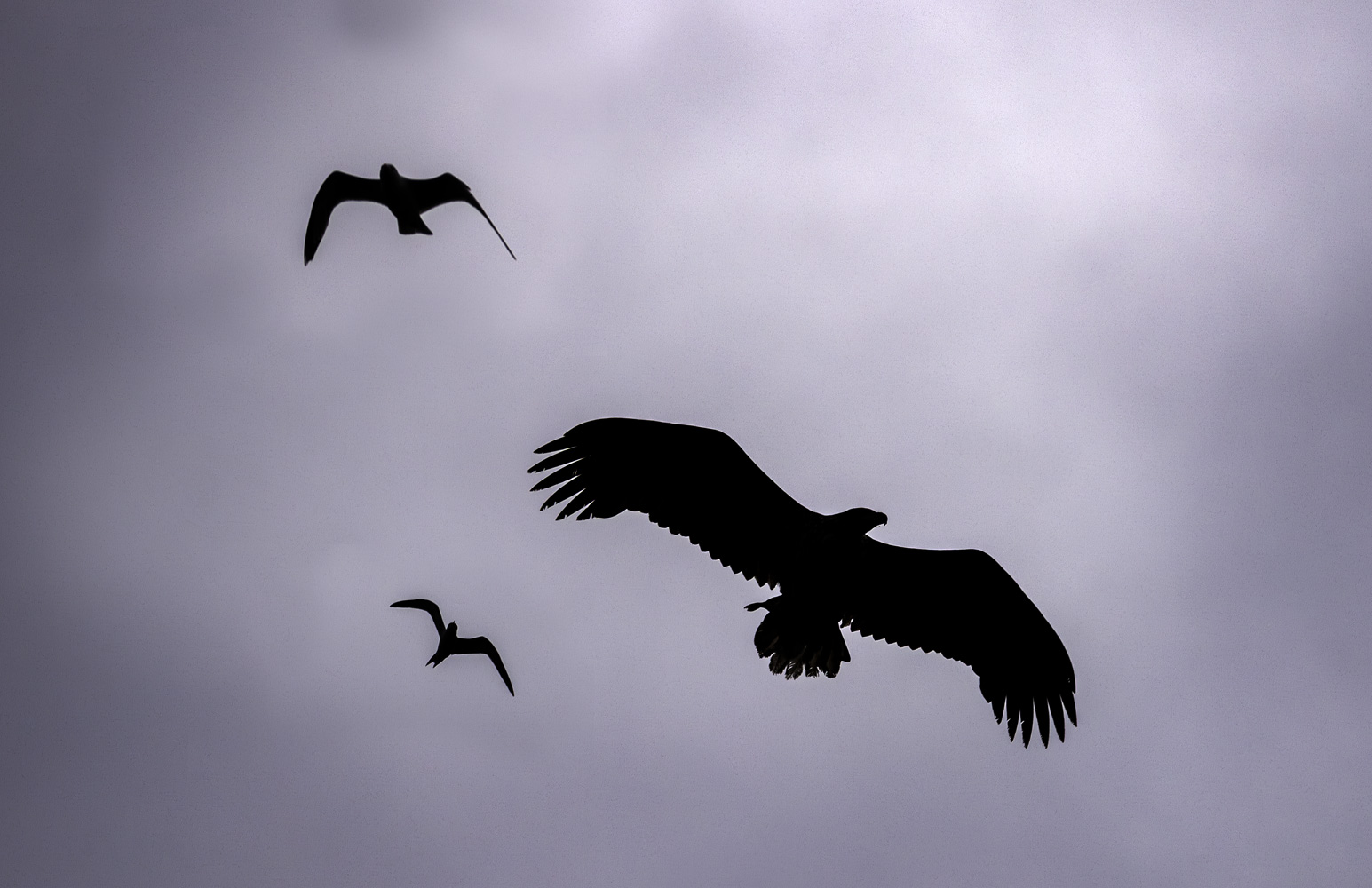Sea eagles – also known as white-tailed eagles – are the British Isles largest bird of prey. Like the wolf and lynx before them, they were regarded as a menace by gamekeepers and sheep farmers, eventually being hunted and poisoned into extinction– the last reliable sighting being in 1918. In 1975 conservationists began reintroducing young birds from Norway to the Isle of Rhum in Scotland’s Inner Hebrides, since when over 150 breeding pairs have established territories across the UK, mostly in the north and west of Scotland.

White-tails (Haliaeetus albicilla) are closely related to the North American bald eagle, but have longer wings and shorter tails. Occupying a similar niche in the ecosystem, they prefer coastal habitats and nesting in tall trees, although they’ll also nest on cliffs and crags if need be.

The juveniles have blackish beaks and darker plumage.

Adults have a distinctly pale head, turning to near white with age.

As their name suggests, sea eagles prey on fish but will also take hares, rabbits, and other birds.

They share the skies with golden eagles, but soar with their wings held flat rather than in a v-shape. With finger-feathered wingtips and relatively long necks, white-tails can, from certain angles, appear vulturine in flight. Whilst apex predators, they’re not above scavenging for carrion, or pirating food from smaller birds.

When gliding down with their fearsome talons ready to pluck a fish from the water, they can also resemble feathered dive bombers

Sea eagles usually live for around 20-25 years. They can weigh as much as 7kg and stand close to a metre tall. The females are larger than the males, with wingspans stretching up to 2.5 metres.

In Gaelic they’re known as ‘Iolaire sùil na grèine’ – the bird with the sunlit eye.

White-tails begin breeding at around 5-6 years old, pairing for life and vigorously defending their territory.

Despite the discrepancy in size, smaller birds such as gulls and crows will mob sea eagles. Carrying a fish in its talons, this juvenile is largely defenceless.

Whilst conservationists and Scotland’s tourist industry have celebrated the white-tail’s wildly successful reintroduction to the British Isles, it hasn’t been without controversy. Many sheep farmers see these hugely powerful birds as ‘wolves of the sky’, holding them responsible for a potentially ruinous uptick in the loss of lambs. Despite the friction, and the ongoing debate regarding their culpability, Scotland’s sea eagles are now firmly re-established.
Further reading:
Hakai Magazine – The Sea Eagles That Returned to Mull
Scottish Wildlife trust – White-tailed eagle